Loch Chon
- Thread starter StJon
- Start date
-
Hey Guest, Early bird pricing on the Summer Moot (29th July - 10th August) available until April 6th, we'd love you to come. PLEASE CLICK HERE to early bird price and get more information.
You are using an out of date browser. It may not display this or other websites correctly.
You should upgrade or use an alternative browser.
You should upgrade or use an alternative browser.
Thanks peeps. 
I'll get around to the write up soon but I've got a busy couple of weeks coming up.
I'll get around to the write up soon but I've got a busy couple of weeks coming up.
You're gonna have to tell me how you do that water effect, I've tried with long exposures and just overexpose to a nice white effect!  No idea if my camera is gucci enough to allow me to get similar results, but I'll keep trying!
No idea if my camera is gucci enough to allow me to get similar results, but I'll keep trying!
Sounds like a good time was had by all though, well done to the organisers for their selfless act of getting others involved. Jacking up a meet of any size must be a daunting task, which reminds me, I must do the Wharcliff Walk again soon!
Sounds like a good time was had by all though, well done to the organisers for their selfless act of getting others involved. Jacking up a meet of any size must be a daunting task, which reminds me, I must do the Wharcliff Walk again soon!
Keep the exposure the same.
Set the Iso. setting to the lowest value and the aperture to the smallest setting (ie. the biggest number )
I usually add a neutral density filter to slow the shutter speed further but it depends if your camera will allow that.
Of course this needs to be done on a tripod as speeds are anything between 2 to 30 seconds so hand holding is not an option.
Set the Iso. setting to the lowest value and the aperture to the smallest setting (ie. the biggest number )
I usually add a neutral density filter to slow the shutter speed further but it depends if your camera will allow that.
Of course this needs to be done on a tripod as speeds are anything between 2 to 30 seconds so hand holding is not an option.
Eric_Methven
Bushcrafter (boy, I've got a lot to say!)
Keep the exposure the same.
Set the Iso. setting to the lowest value and the aperture to the smallest setting (ie. the biggest number )
I usually add a neutral density filter to slow the shutter speed further but it depends if your camera will allow that.
Of course this needs to be done on a tripod as speeds are anything between 2 to 30 seconds so hand holding is not an option.
So using the above method Gary, do you set it up as aperture priority and let the camera choose it's own shutter speed? Kind of forcing it into a long exposure?
The more I read of your techniques the more I realise there's so much more I need to learn about photographic techniques. Those photos are brilliant as usual.
Eric
Yes Eric, I should have said that.
I usually take a shot and then give a bit of over or under compensation on the auto after checking the histogram to get the final exposure spot on.
I usually take a shot and then give a bit of over or under compensation on the auto after checking the histogram to get the final exposure spot on.
As you know I was moving on to do some photography after the meet so I though I'd post up a few results.


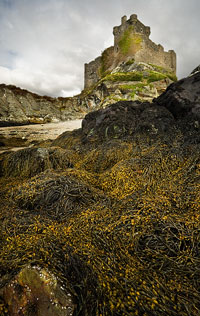
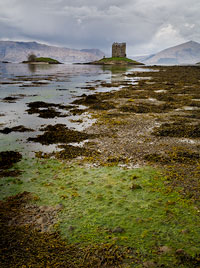


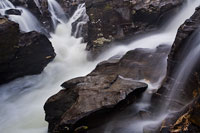
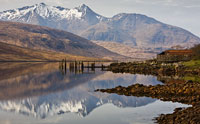

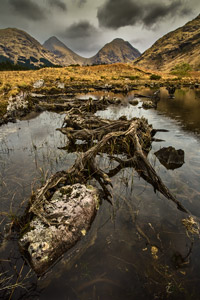


There are bigger versions on the website if you're interested but I haven;t written up the info yet.
For anyone that's interested I've managed to finish the write up on these pictures now.
Gary, what's the difference between a ND 4 and an ND 8? I think you explained that it wiould mean I could keep the shutter open for double the time, but I'm not sure if I remember that correctly! 7 day shop has cheap ones for 5 and 6 quid respectively. Will they do as starter filters?
The number usually refers to the exposure factor.
ND 2 requires twice the exposure. ie. one stop wider aperture or half of the shutter speed.
ND 4 requires 4x the exposure. ie. two stops wider aperture or quarter of the shutter speed.
ND 8 requires 8x the exposure. ie. three stops wider aperture or an eighth of the shutter speed.
ND 16 requires 16x the exposure. ie. four stops wider aperture or 1/16th of the shutter speed.
ND 32 requires 32x the exposure. ie. five stops wider aperture or 1/32nd of the shutter speed.
ND 64 requires 64x the exposure. ie. six stops wider aperture or 1/64th of the shutter speed.
As an example, If you had a base exposure of f 16 at 1/125th of a second.
An ND4 would give you f 16 at 1/30th of a second or f 8 at 1/125th of a second.
An ND8 would give you f 16 at 1/15th of a second or f 5.6 at 1/125th of a second.
I often use an ND64 which in the same example would give f 16 at 1/2 of a second or f 2 at 1/125th of a second.
Hope that make sense.
ND 2 requires twice the exposure. ie. one stop wider aperture or half of the shutter speed.
ND 4 requires 4x the exposure. ie. two stops wider aperture or quarter of the shutter speed.
ND 8 requires 8x the exposure. ie. three stops wider aperture or an eighth of the shutter speed.
ND 16 requires 16x the exposure. ie. four stops wider aperture or 1/16th of the shutter speed.
ND 32 requires 32x the exposure. ie. five stops wider aperture or 1/32nd of the shutter speed.
ND 64 requires 64x the exposure. ie. six stops wider aperture or 1/64th of the shutter speed.
As an example, If you had a base exposure of f 16 at 1/125th of a second.
An ND4 would give you f 16 at 1/30th of a second or f 8 at 1/125th of a second.
An ND8 would give you f 16 at 1/15th of a second or f 5.6 at 1/125th of a second.
I often use an ND64 which in the same example would give f 16 at 1/2 of a second or f 2 at 1/125th of a second.
Hope that make sense.
The number usually refers to the exposure factor.
ND 2 requires twice the exposure. ie. one stop wider aperture or half of the shutter speed.
ND 4 requires 4x the exposure. ie. two stops wider aperture or quarter of the shutter speed.
ND 8 requires 8x the exposure. ie. three stops wider aperture or an eighth of the shutter speed.
ND 16 requires 16x the exposure. ie. four stops wider aperture or 1/16th of the shutter speed.
ND 32 requires 32x the exposure. ie. five stops wider aperture or 1/32nd of the shutter speed.
ND 64 requires 64x the exposure. ie. six stops wider aperture or 1/64th of the shutter speed.
As an example, If you had a base exposure of f 16 at 1/125th of a second.
An ND4 would give you f 16 at 1/30th of a second or f 8 at 1/125th of a second.
An ND8 would give you f 16 at 1/15th of a second or f 5.6 at 1/125th of a second.
I often use an ND64 which in the same example would give f 16 at 1/2 of a second or f 2 at 1/125th of a second.
Hope that make sense.
:bluThinki
I think I've got it! Just popping my brain back in now after trying to follow the maths on that one! So, is ND8 no good? Should I go for a higher number?

It depends what you're trying to achieve.

If you want the longest shutter speed possible then go for the highest number available but remember, you're going to need a good tripod to hold the camera still as well.

If you want the longest shutter speed possible then go for the highest number available but remember, you're going to need a good tripod to hold the camera still as well.
I've got a fair tripod that will hold it steady, I don't have a shutter release cable function but I can use the 2 second timer to eliminate any wobble from pressing the shutter release. I might get one to have a play with, nithing ventured, nothing gained!
Cheers Gary.

Cheers Gary.
The maths is simple if you just remember the traditional full stop settings.
F stops..... 32 - 22 - 16 - 11 - 8 - 5.6 - 4 - 2.8 - 2 - 1.4
Shutter speeds.... 1/1000th - 1/500th - 1/250th - 1/125th - 1/60th - 1/30th - 1/15th - 1/8th - 1/4 - 1/2 - 1 second.
Each stop represents a halving or doubling of the light that hits the film or sensor.
It only gets confusing because modern cameras have a lot of extra setting between these numbers that are half or third stop settings.
F stops..... 32 - 22 - 16 - 11 - 8 - 5.6 - 4 - 2.8 - 2 - 1.4
Shutter speeds.... 1/1000th - 1/500th - 1/250th - 1/125th - 1/60th - 1/30th - 1/15th - 1/8th - 1/4 - 1/2 - 1 second.
Each stop represents a halving or doubling of the light that hits the film or sensor.
It only gets confusing because modern cameras have a lot of extra setting between these numbers that are half or third stop settings.
Similar threads
- Replies
- 7
- Views
- 285
- Replies
- 14
- Views
- 906
